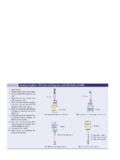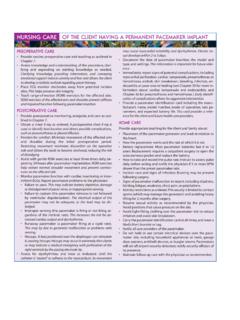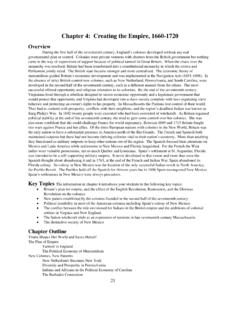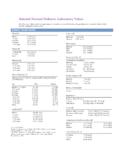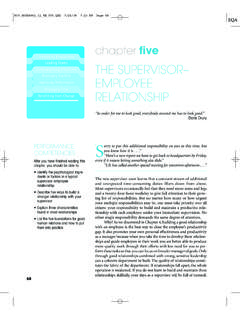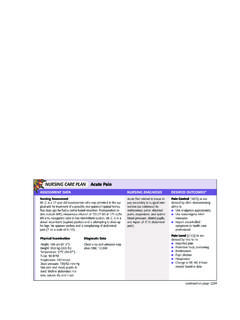Transcription of QUALITY CONTROL AND CONTINUOUS IMPROVEMENT
1 97 PERFORMANCECOMPETENCIESA fter you have finished reading thischapter, you should be able to: Explain management s responsi-bilities in leading a QUALITY system Describe how QUALITY affects pro-ductivity, as well as employeeand customer satisfaction Explain three reasons why supervisors are often in the bestposition to champion trainingprograms Explain confirming signs andnegating signs and describe theexchange rate between the two Explain and facilitate simpleprocess IMPROVEMENT efforts foryour teamchapter sevenQUALITY CONTROLAND CONTINUOUSIMPROVEMENT QUALITY is everyone s responsibility. W. Edwards DemingAny supervisor working in a profitable company today will tell youhow important QUALITY is to its bottom line. It is a simple fact thatwithout a high level of QUALITY , the company s days are plants and service organizations, large or small, through-out the country and world have embraced a QUALITY -minded , world-class organizations are committed to pro-ducing high- QUALITY products and providing high- QUALITY services.
2 Topmanagement recognizes the critical need for the merger of a soundquality philosophy with the production of goods and , foreign competition, and rising prices of raw materialsdue to diminishing natural resources combine to make QUALITY one ofthe foremost goals in modern industry. The level of QUALITY directly im-pacts the amount of waste and rework a company experiences. Wasteand rework increase costs and thus consume profits. Eliminating wastealso has a positive effect on our environment. It takes less energy andmaterial when QUALITY rises. QUALITY is every employee s BRIEF OVERVIEW OF QUALITYThe push for higher QUALITY has revolutionized the way business is con-ducted. Theories and philosophies have been developed and dissemi-nated throughout the world. Three of the best-known and widelypublished QUALITY gurus are W. Edwards Deming, who outlined hisnow-famous Fourteen Points to achieving quality1; Philip Crosby andhis QUALITY Management Grid2; and Joseph Juran, who proposed a uni-versal way of conceptualizing QUALITY CONTROL and QUALITY IMPROVEMENT ,which he called the QUALITY tremendous impact of 7/25/08 7:26 PM Page 9798 Chapter 7 American pioneers in QUALITY CONTROL is incalculable.
3 Collectively, their philosophieshave literally changed the fundamental values of industries throughout the philosophies share the belief that IMPROVEMENT is a never-ending process, andthat training in QUALITY CONTROL should be open to employees at all revolution in QUALITY in the United States has its roots in efforts to stan-dardize production methods for the military during World War II, and continuedin response to the emphasis on QUALITY and resultant competition from Japan,particularly in the automotive and electronics industries in the 1970s. In additionto Deming, Juran, and Crosby and their contributions, a number of qualitymethodologies, programs, and standards for measuring QUALITY have developedand are used, to varying degrees, in industry to present. These include:Total QUALITY Management (TQM).TQM is a people-focused managementsystem that focuses on increasing customer satisfaction while continually re-ducing costs.
4 Although it uses scientific methods for assessing QUALITY and as-sociated costs and constraints and implementing IMPROVEMENT , it takes a totalsystems approach in which all functions, processes, and departments across theorganization, and all employees at all levels, are integral to ensuring success inthe manufacture of products or delivery of services. TQM stresses learning andadaptation to continual change as essential to achieving this term Six Sigmawas coined by Motorola as its methodology forimproving business processes by minimizing defects and refers to the statisticalmeasurement indicating there are only defects out of every 1 million op-portunities to produce a defect, or virtually zero. It is an organizational ap-proach where companies make decisions based on data, seek roots of problems,define defects based on customer requirements, and track leading indicators ofproblems to prevent them from productionrefers to the CONTINUOUS flow of products orservices to the customer at the moment it is needed and to the customer s specifi-cations.
5 It focuses on increasing productivity and QUALITY while reducing inventoryand shortening lead time from floor to customer. Its principles include workplacesafety, order, and cleanliness; just-in-time production; built-in Six Sigma QUALITY ;empowered teams; visual management to track performance and provide imme-diate feedback on a daily or even hourly basis; and continual pursuit of Standards Organization QUALITY Management Standards Organization (ISO) has developed a series of qualitymanagement standards that support the QUALITY philosophy. Specifically, it hasdeveloped a set of five such standards, ISO 9000 9004. The AmericanNational Standards Institute (ANSI) and the American Society for QualityControl (ASQC) developed the ANSI/ASQC Q9000 Q9004. In addition, spe-cific standards also exist for automotive, aerospace, and telecommunicationsindustries and for environment management.
6 These standards have been re-vised over the years, and organizations must continually address these revi-sions. Organizations competing in the global market must achieve the qualitylevels dictated by these addition to these and other programs and methodologies, a number ofprestigious national and international QUALITY awards are available to which com-panies apply and compete to be recognized for their commitment to 7/3/08 5:03 PM Page 98 QUALITY CONTROL and CONTINUOUS Improvement99quality. These awards include the Malcolm Baldridge national QUALITY Award, theEuropean QUALITY Award, and the Deming Prize, Japan s highest QUALITY award. Thestandards for receipt of these awards are high and the review process is rigorous. Forexample, to receive the Malcolm Baldridge national QUALITY Award, recipients musthave demonstrated performance excellence in seven categories: leadership; strate-gic planning; customer and market focus; measurement, analysis, and knowledgemanagement; workforce focus; process management; and BaldridgeNational QUALITY Awards are awarded to organizations involved in manufacturing,small business, service, education, and QUALITY movement in the United States is pervasive and extends beyondmanufacturing industries and includes areas like service, healthcare, education, andgovernment.
7 For professionals involved in these and other industries, the mostprominent professional organization to which they can belong is the AmericanSociety for QUALITY (ASQ) (formerly the American Society for QUALITY CONTROL ). ASQprovides its members with the latest information on QUALITY standards, processes, andprocedures. It also offers a curriculum of courses that lead to a certification in qualitycontrol. Supervisors should seriously consider joining this organization. Supervisorswho earn a certificate in QUALITY CONTROL greatly increase their value to their translates into increased income, advancement, and career COMMITMENT TO THE QUALITY PROCESSThe various philosophies, programs, methodologies, and awards discussed promotea common goal of developing an integrated total QUALITY system by engaging in con-tinuous IMPROVEMENT . They also share the belief that managers and supervisors playan enormously critical role in achieving and maintaining high standards of 7/3/08 5:03 PM Page 99100 Chapter 7To illustrate this point, all fourteen points in Deming s philosophy pertain to themanagers.
8 According to Deming, workers, management, vendors, and investors areon the same team. It is management who creates the culture of worker ownership of the IMPROVEMENT process. Management creates the culture that enables workersto feel comfortable enough to recommend changes. Management develops thestrategic plan for implementing the QUALITY initiative. Through their plan, resourcesnecessary to fund the process of change are allocated. Additional investments intools, machinery, equipment, and materials might have to be made. QUALITY partscannot be produced on worn-out or obsolete equipment. Training is integral toindividual performance. Employees must know exactly what to do. Training isongoing. It starts when employees are hired and continues throughout their timewith the company. There are sizable indirect costs associated with training that theorganization must absorb.
9 For example, training will impact the quantity of pro-duction. It may suffer as workers leave their workstations to receive classroom train-ing or when they meet regularly with their process IMPROVEMENT team. Significantimprovements come from well-trained is vital that management personnel face up to their responsibility. Theymust plan for the added costs that improvements will bring. It is equally importantthat managers model the proper attitude. Enthusiasm is contagious and manage-ment must demonstrate their commitment beyond funding. They must demon-strate enthusiasm for the process. The CONTINUOUS IMPROVEMENT process inevitablybrings many changes and management s reaction to change will be watched andmonitored by the workers. Workers attitudes and willingness to embrace theprocess will be influenced chiefly by the example management AND CONFIRMING SIGNS OF MANAGEMENT COMMITMENTW hile management may implement QUALITY management programs, it is not alwayscommitted to them.
10 Management shows signs of its commitment through its slo-gans, its talk throughout the organization about QUALITY principles, the training itprovides supervisors and employees, its CONTINUOUS IMPROVEMENT teams (CITs),and other efforts. Yet, in some organizations, managers may say they value QUALITY ,but their behavior says something quite different. When management behavesincongruently in this fashion, employees will believe the behaviors and not the slo-gans and words. Managers who say one thing and do another are bound to us consider a story that illustrates clearly what can happen when managerstry to fool their employees into thinking they value something when they reallydon production (non-management) employees from the same manufacturing plantvoluntarily gathered together in a nearby college classroom one Saturday morning at theurging of Leonard, one of their peers.


